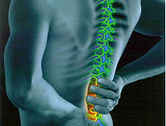
To Schedule An Appointment
Call 3588688/09777959550
PHYSICAL THERAPY / MYOTHERAPY /ACUPUNCTURE
BUDDHAS PALM THERAPY SERVICES
PHYSICAL THERAPIST are knowledgeable of surgical procedures and treatment goals. PHYSICAL THERAPY include therapeutic exercise, joint mobilization, manual therapist, range of motion exercise, cardiovascular training, relaxation exercises along with modalities including electrotherapy, cryotherapy and hydrotherapy.







Specialties
PHYSICAL THERAPY
HOME SERVICE PHYSICAL THERAPY METRO MANILA
- Rehabilitation for stroke/CVA patients
- Scoliosis program to treat curvature of the spine
- Manual therapy, which uses the massage and manipulation of the body's soft tissues to relieve pain and promote healing
- Preparing the body before orthopedic surgery and rehabilitation after surgery
- General strength training
- Rehabilitation after a bone fracture
- Outpatient prosthetic rehabilitation, to help individuals adjust to an artificial limb or other external appliance
- Rehabilitation after a back or neck injury
- Rehabilitation after a sports injury
- Comprehensive musculoskeletal evaluation to determine the cause of and best treatment for acute or chronic pain
SPORTS MASSAGE THERAPY AND REHABILITATION
Each sport carries its own risk of injury for the athlete.
Sports injuries have sidelined many athletes for games, seasons, and worse, careers.
Injuries are common while participating in organized sports, competitions, training exercises, or fitness activities.
Poor training methods, inadequate warm-up, and lack of conditioning are a few of the causes of sports injuries.
Coping with sports injuries often requires physical rehabilitation. Physical therapy helps people rebuild strength and movement in parts of their body after an injury. Therapy can also help someone manage pain and prevent permanent damage and recurring problems.
Physical therapists are trained to help patients recover following an injury. As part of physical therapy, they can teach exercises, stretches, and techniques using specialized equipment to address problems.
The most common sports injuries include sprains, strains, knee injuries, swollen muscles, shin splints, fractures, and dislocations.
Poor training methods, inadequate warm-up, and lack of conditioning are a few of the causes of sports injuries.
As part of physical therapy, therapists teach exercises, stretches, and techniques using specialized equipment to address problems.

ACUTE AND CHRONIC PAIN
PHYSICAL THERAPY FOR MUSCLE PAIN
Your doctor may refer you to a physical therapist to help you relieve your muscle pain and restore movement.
Physical therapy includes both passive and active treatments. Passive treatments help to relax you and your body. They also prepare your body for therapeutic exercise, which is the active part of physical therapy.


STROKE
Home Physical Therapy Helps Stroke Patients
Stroke is a condition in which the brain cells suddenly die because of a lack of oxygen. This can be caused by an obstruction in the blood flow, or the rupture of an artery that feeds the brain. The patient may suddenly lose the ability to speak, there may be memory problems, or one side of the body can become paralyzed.
Physical Therapy After a Stroke
Physical therapy retrains your muscles to do what they did before your stroke ; but the process may require plenty of time and patience.
LOWER BACK PAIN
If you have low back pain, you are not alone. At any given time, about 25% of people in the United States report having low back pain within the past 3 months.
In most cases, low back pain is mild and disappears on its own. For some people, back pain can return or hang on, leading to a decrease in quality of life or even to disability.
If your low back pain is accompanied by the following symptoms, you should visit your local emergency department immediately:
-
Loss of bowel or bladder control
-
Numbness in the groin or inner thigh
-
Radiating pain
-
Difficulty upon sleeping and prolonged standing
How Can a Physical Therapist Help?
Your physical therapist can help you improve or restore mobility and reduce low back pain—in many cases, without expensive surgery or the side effects of medications.
If you are having low back pain right now:
-
Stay active, and do as much of your normal routine as possible (bed rest for longer than a day can actually slow down your recovery.)
-
If your pain lasts more than a few days or gets worse,
-
Schedule an appointment to see your physical therapist.


//